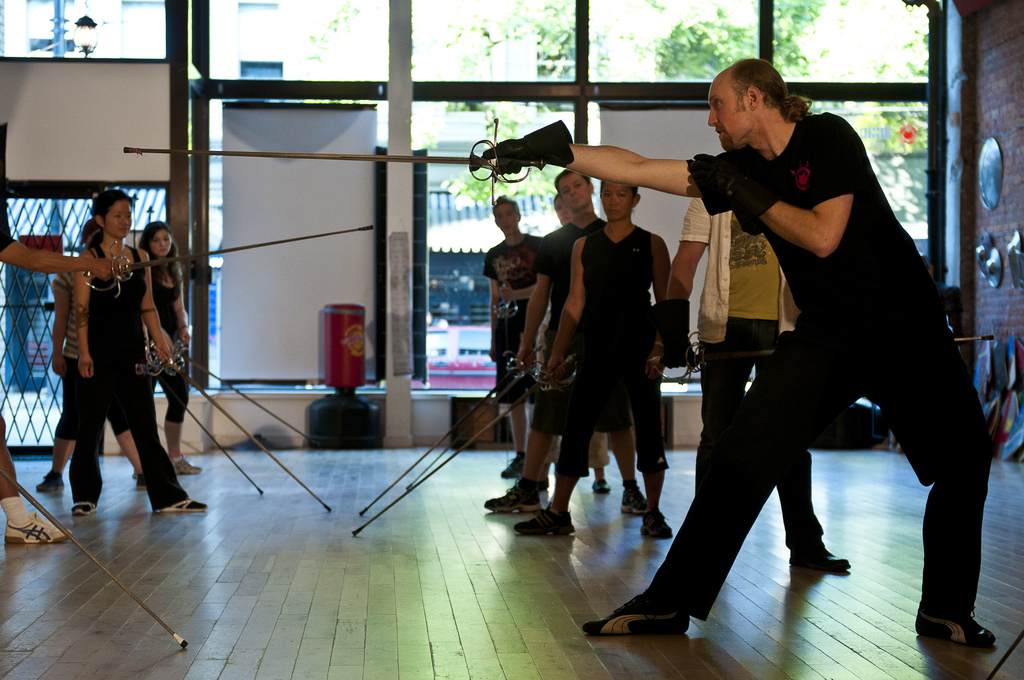When you’re learning a new technique you need to give yourself the time and space to build a solid mechanical grounding. I recommend a three stage process to building this first level of proficiency:
Stage 1. Crispness
Break down a complex mechanical motion into component parts and then execute each component as a distinct and crisp action. In swordplay break down your components in order by parts of the body starting with the fastest and finest in motion. This means begin with manipulation of the weapon with the hands, then elbows, shoulders, body, and finally feet. So a fencing movement that involves changing lines (moving the sword form one side of the opponent’s weapon to the other) and then attacking on the new line, might be broken into three pieces:
1. Change lines using the hands and elbows.
2. Control the new line with an extension of the arms and body.
3. Move the body in to strike using the feet.
Each piece has a beginning and end position. The movement in between each position should be precise and the parts should not be blended together until they are each being executed well as individuals.
Stage 2. Smoothness
Once you have built proficiency with the broken down movement, begin to blend the movements together while maintaining their order. I recommend dropping to a very low speed so that the entire motion can be executed at a uniform rate with no pauses or hesitations in between actions.
Smoothness should be achieved before speed is added. Moving from crispness to smoothness allows us to build a very efficient motion.
Stage 3. Speed
Gradually add speed to the motion without losing its precision. If at any point precision is lost, bring the speed back. If bringing the speed back is still not accomplishing the motion successfully then return to stage 1 and visit each individual component again.
Once fundamental precision is achieved its important to bring the technique out of its mechanical bubble and start testing it in a more contextual environment. As you identify challenges in this new space you can bring them back to this three stage process to diagnose and perfect the technique further.
